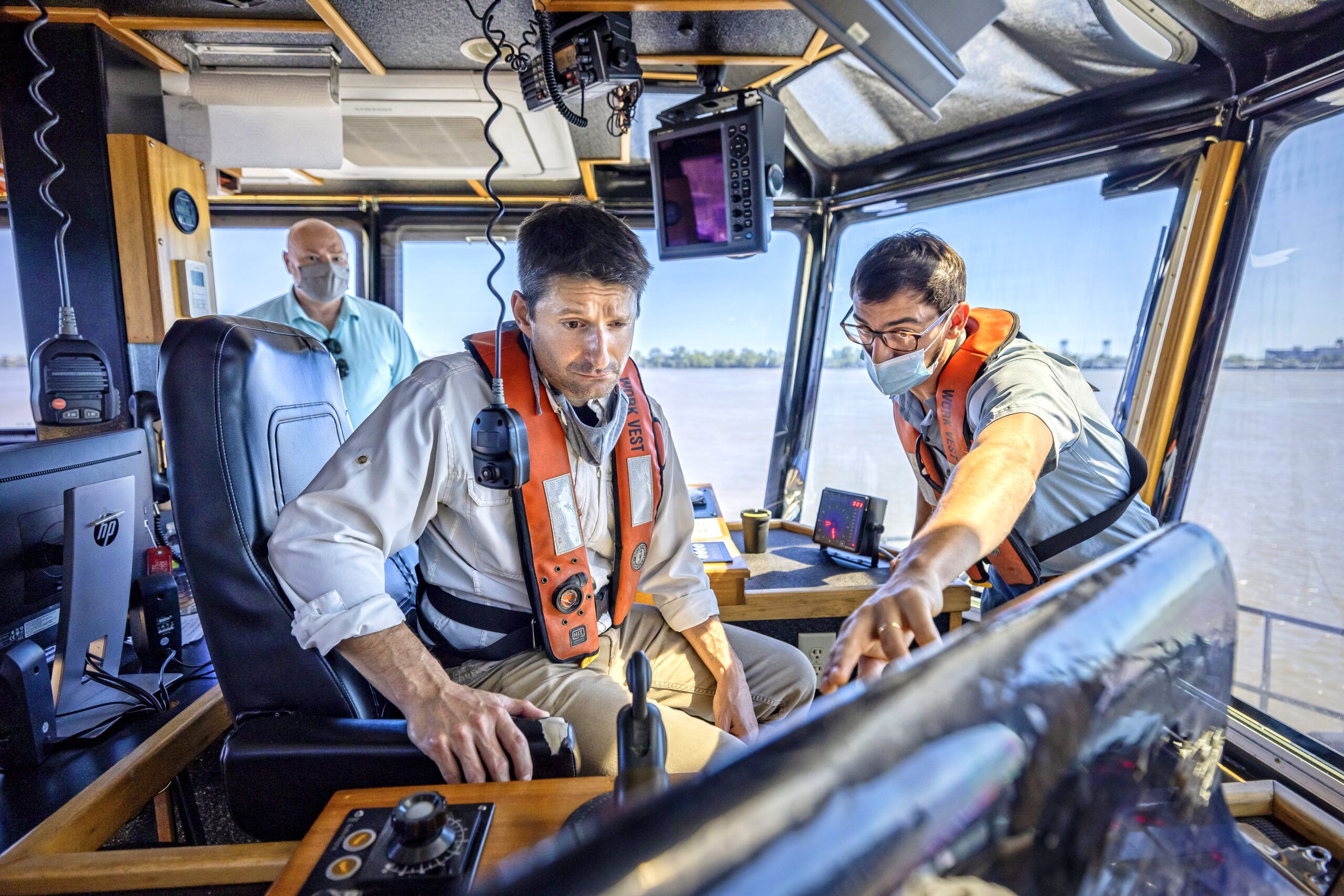
The technology behind the groundbreaking Smart Port initiative launched last year at The Water Campus in Baton Rouge was already out there.
It was just a matter of connecting the dots, says Justin Ehrenwerth, president and CEO of The Water Institute of the Gulf.
Still in its early stages of development, Smart Port will ultimately serve as a crowd-sourced technology dashboard that will gather data from tugboats and other working vessels to create an accurate real-time depiction of sediment buildup, or shoaling, in the Mississippi River.
The dashboard will then provide the eight ports from north Louisiana to Venice with a real-time shoaling tool and customized resiliency strategies. It will also allow any port or stakeholder on the river to access local weather forecasts, road traffic conditions coming in and out of the port, and river traffic conditions.
It’s a true multidisciplinary effort being coordinated at The Water Institute by project manager Jason Curole and lead principal investigator Mike Miner.
The idea was born out of an informal meeting in 2018 between Ehrenwerth, Port NOLA President/CEO Brandy Christian and Bobby Landry, who was port vice president at the time. The port officials described to Ehrenwerth a serious recurring dilemma in tracking sediment buildup in the river. While survey vessels tracked the river depths on a periodic basis, that did little good for river pilots who needed information in real time.
“In areas of sediment buildup, they didn’t have the draft they needed,” Ehrenwerth says. “They’d then have to get an emergency dredge, a process that took as long as 16 days and cost a significant amount of money.”
Fortunately, the Water Institute had been studying the movement of water for years, so Ehrenwerth saw an opportunity for collaboration.
Read the full story about the development and adoption of Smart Port in 10/12 Industry Report.

